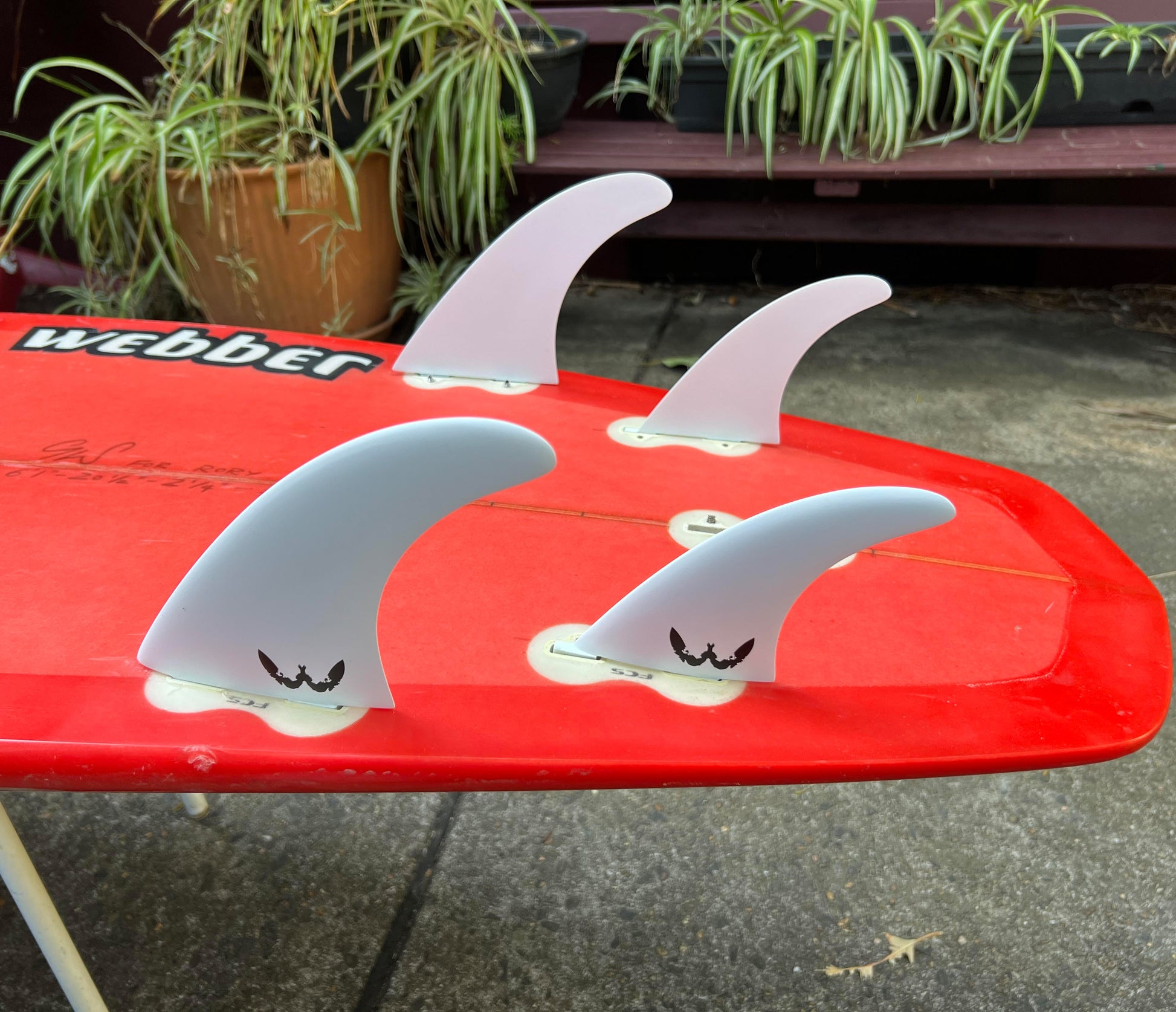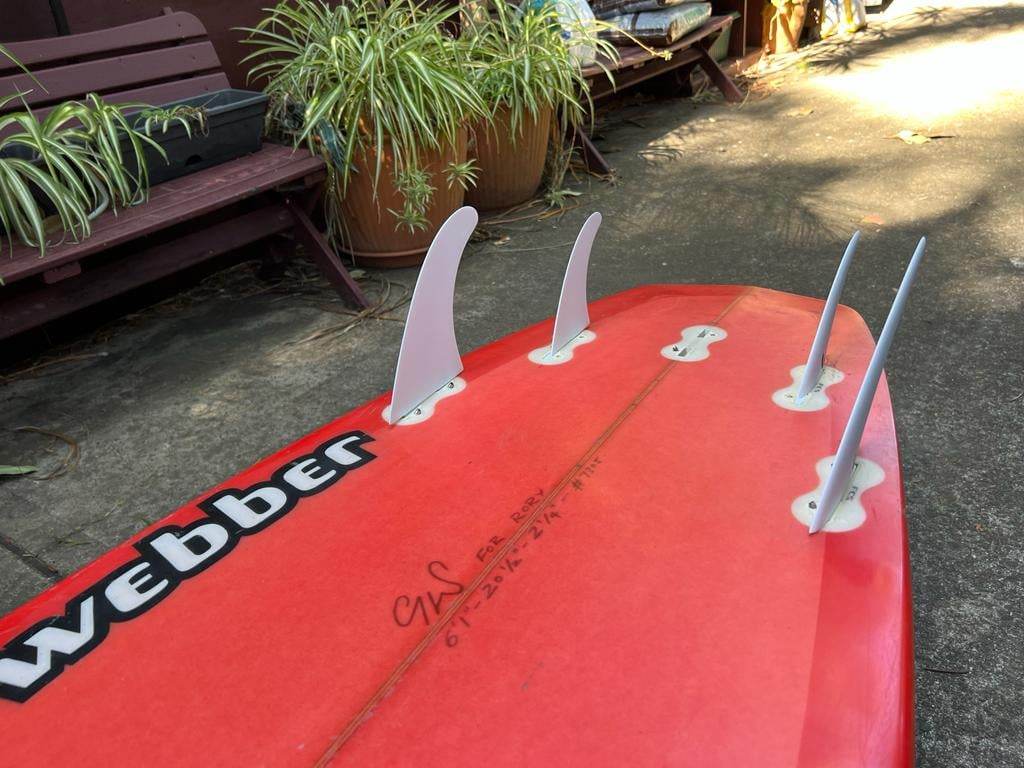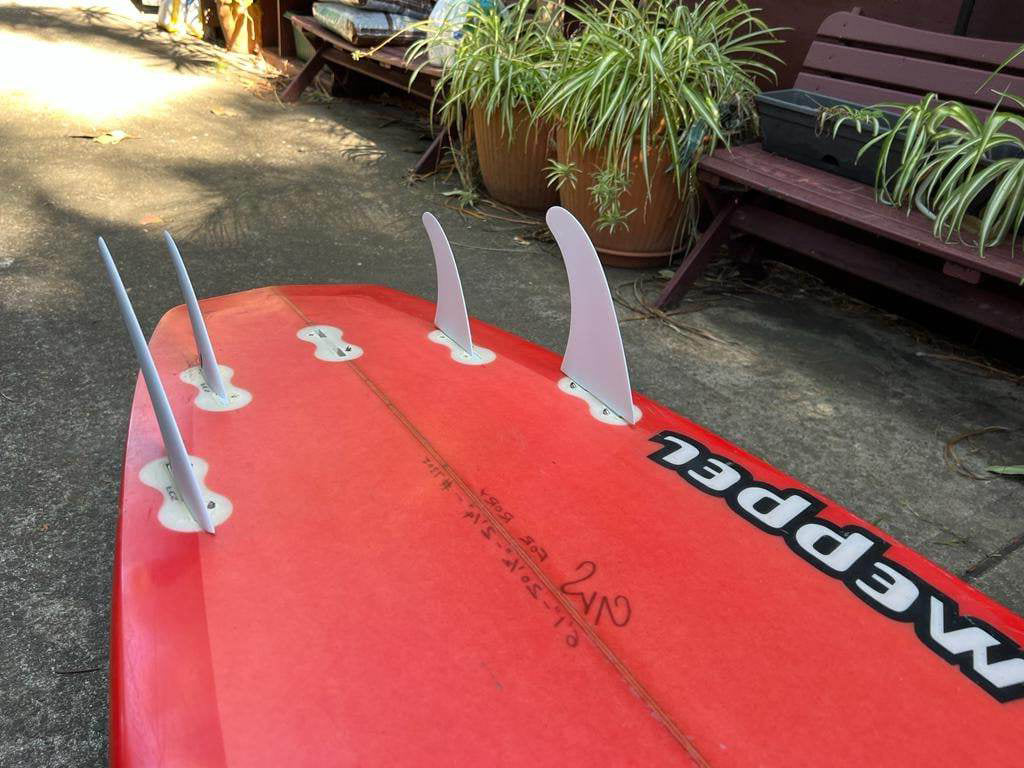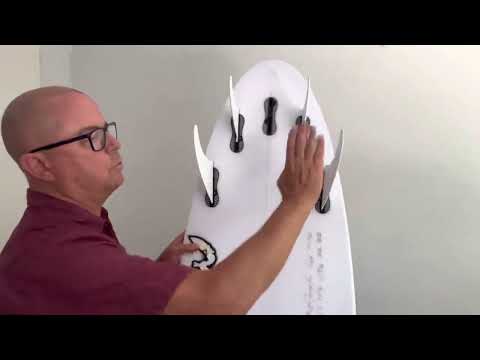Webbersurfboards
Webber Extractors Set
Webber Extractors Set
Fin flex has been misinterpreted for decades, and it is my thinking that there is nothing amazing happening when the fin returns to being straight after it has flexed and bent during the turn. It’s what’s happening during the turn that counts, not at the end of the turn. The reason why this misinterpretation has happened at all is because the net result of the turn (with a well designed flexing fin) is a burst of speed out of the turn, and so no wonder earlier surfboard designers thought that the return movement of the fin from curved to straight, was the dynamic that was creating the burst of speed. The speed through the turn is enhanced significantly when a larger fin with more rake and depth can bend to the arc of the turn. This means that more overall surface area is pushing against the wave face so that more speed will result. The fin has to flex to some degree so that it matches with the arc of the turn. Too little flex and you are trying to do a curved turn with a straight object. Too much flex and the fin will curve too tightly and water will escape around that tight curve and there will be a big loss of drive and hold. The plan-shape is as key to the level of flex as is the thickness of the fin from base to tip. The actual foil shape itself isn’t even that relevant when a fin can flex to the right degree. When a fin can flex up to 15mm then it is the momentary curve on the high pressure inside of the fin which is critical, not the 6mm of foil on the low pressure side. And don’t forget that when the fin goes deeper into the face of the wave (because it’s a taller fin) then it is acting on higher pressure water due to the layers of water above, and so when you increase the depth of the fin by let’s see 20% then you are adding that 20% in the best part of the wave face deeper inside it. As a result you get more than a 20% increase in speed and hold. To me the only really critical thing about foil is the degree to which it influences flex. When you see the video of these things flexing just look at the way the flat inside surface becomes a beautiful curve. Then imagine how nicely the water will flow around both sides of the fin, a little bit like what happens when a shark moves it’s tail from side to side. The hold increases because the chance of cavitation is radically reduced. My guess is that one-day propellers will have some level of flex in the trailing edges in order to decrease cavitation.
Webber Extractors Set
$195 AUD
POST INSIDE AUS $15
POST OVERSEAS $25
Please contact Greg about purchasing the Webber Extractors Fin Set on email at, Gw@webbersurfboards.com
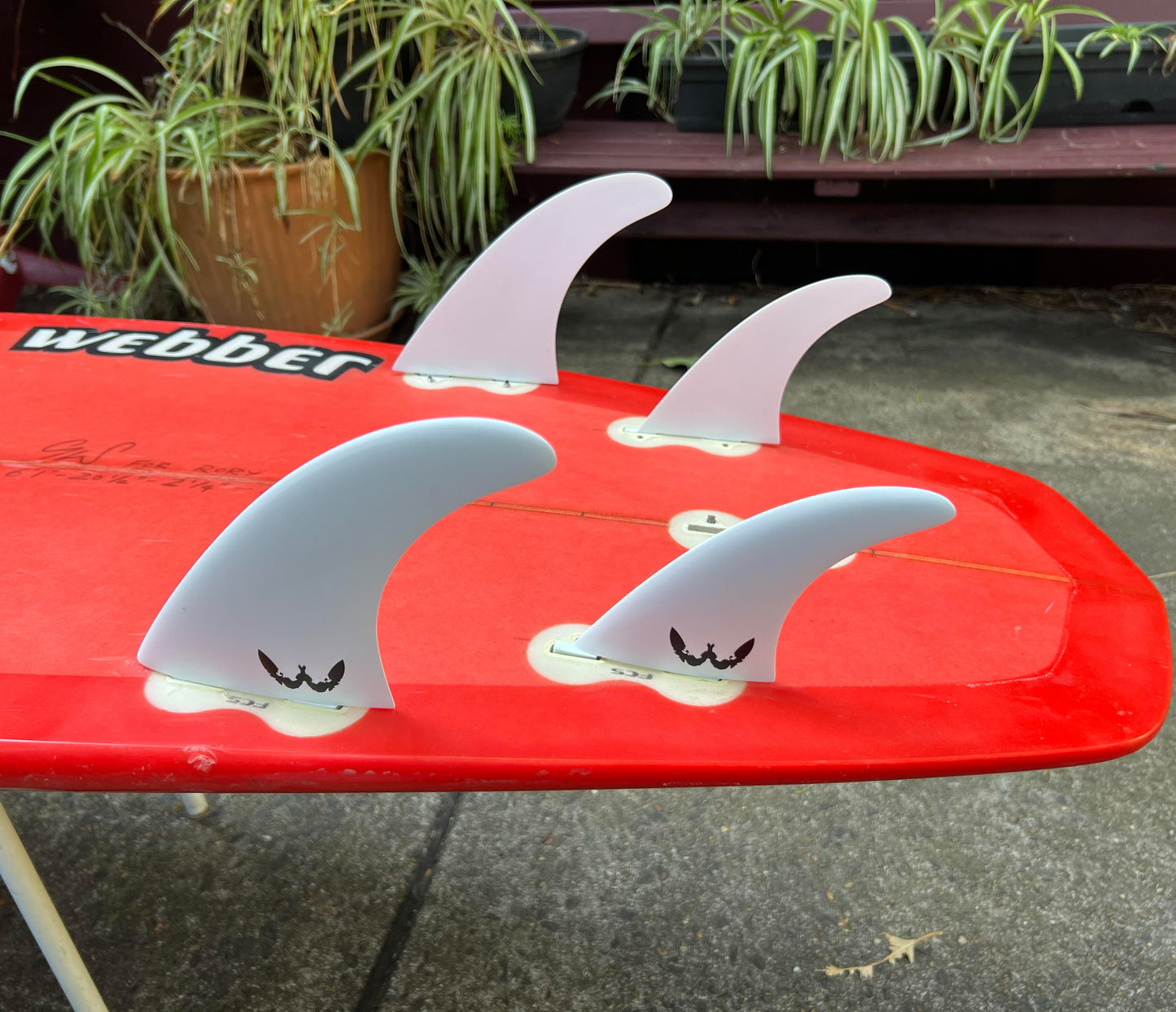
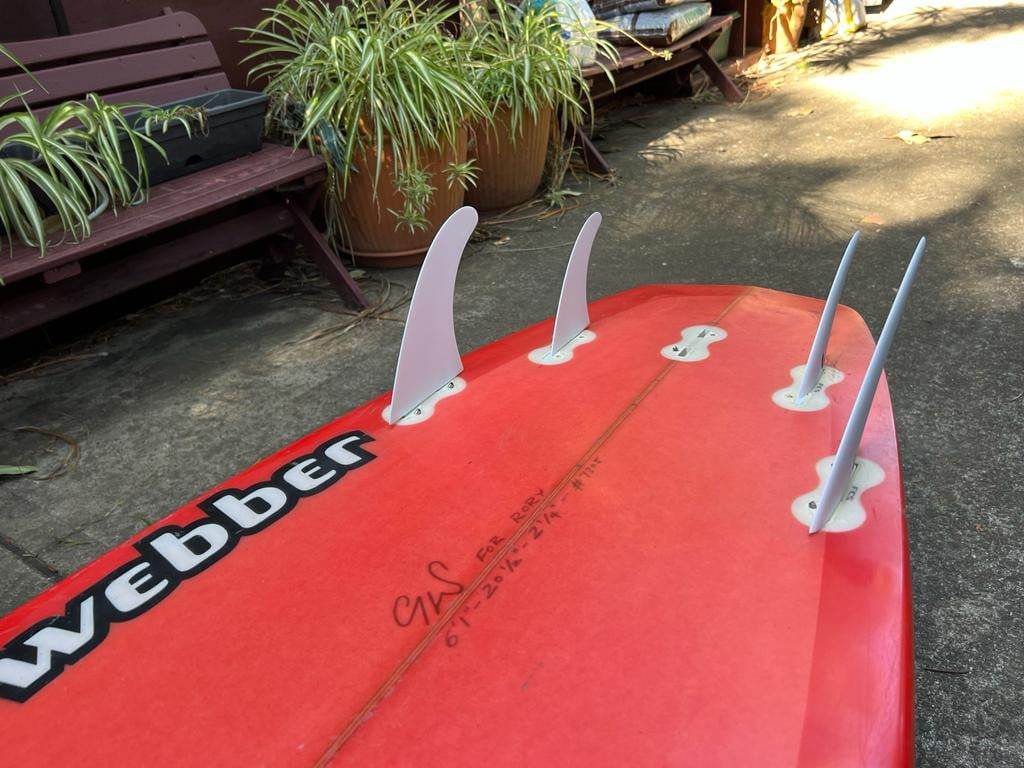
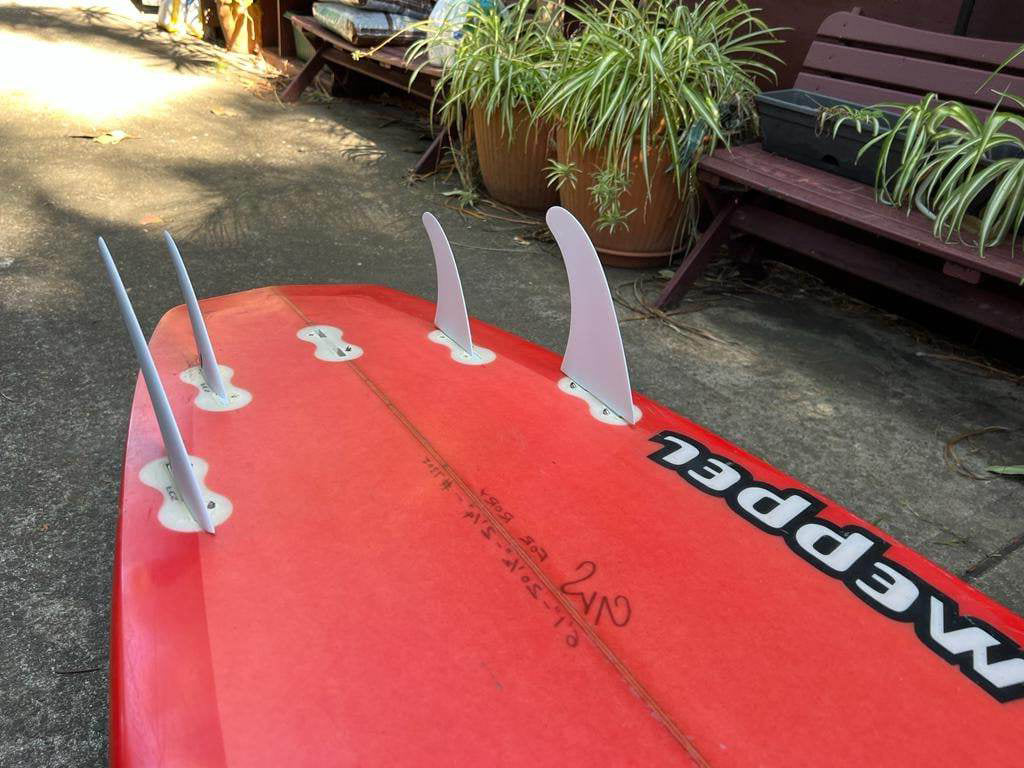
-
Fins review
These fins went sick on the eyre peninsula over the Xmas break.. Fastest fins I've surfed ever!!!!!!
-Troy

